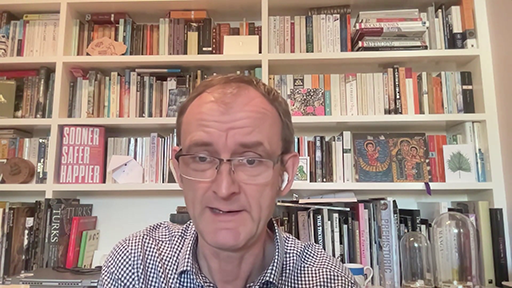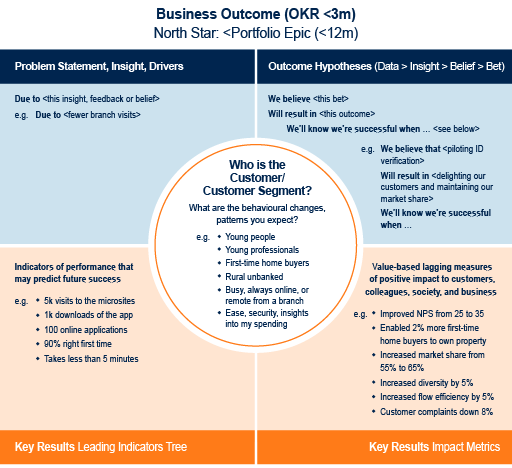2.1 Outcome hypotheses and OKRs
Activity 1 (below) aims to help you understand how to measure and continually improve Value.
The value associated with unique change is best articulated as outcome hypotheses (also known as Objectives and Key Results, or OKRs). This creates a clear expectation that it is a hypothesis and may be invalid and that there are unknown-unknowns that will only be uncovered when the work takes place. It also creates a clear expectation that experimentation is required, with people empowered to use their own brains to discover how to best achieve the outcome, or even if the outcome hypothesis is worth continuing trying to achieve.
You can write an outcome hypothesis like this:
Due to
We believe that
Will result in
We will know that we’re on the right track when:
Measure 1: quantified and measurable leading or lagging indicator
Measure 2: …
Measure 3: …
In the short video below, Myles Ogilvie, Principal at Sooner Safer Happier Limited, explains more about the importance of leading and lagging indicators, and how they relate to value and behavioural shifts.

Transcript
To aid the writing of your first business outcome, use the canvas below (Figure 2).
Activity 1: An outcome hypothesis
On a whiteboard (or digital canvas), draw four quadrants with a circle in the middle, like Figure 2 (below). Label the quadrants as shown in Figure 2 and the circular customer segment in the middle.
For an outcome you are seeking to achieve, and using the completed canvas in Figure 2 for guidance, start to populate each sector with information. It does not matter which sector you start in, and you can iterate each sector as your thinking develops.
As you populate your canvas, reflect on the following questions:
For this outcome – how will you decide when your outcome is achieved? Is it based on a date, a scope, budget spent or something else?
What is the time horizon you chose for your outcome? (see Pattern 5)
Over time, as your mastery of this approach increases, consider writing business outcomes as ‘moonshots’ or stretch goals. Traditional objective setting tends to lead to mediocrity, to underpromising in order to overachieve the goal. Achieving 100% regularly is not thinking big enough. Instead, achieving 60% to 70% of a business outcome is doing well.
Further information
To explore this pattern in more depth, watch the following YouTube videos:
OK NOTOK OKRs - Jon Smart (Americas) [Tip: hold Ctrl and click a link to open it in a new tab. (Hide tip)] (54 minutes 54 seconds)
Output vs Outcome & Impact (10 minutes 37 seconds)

